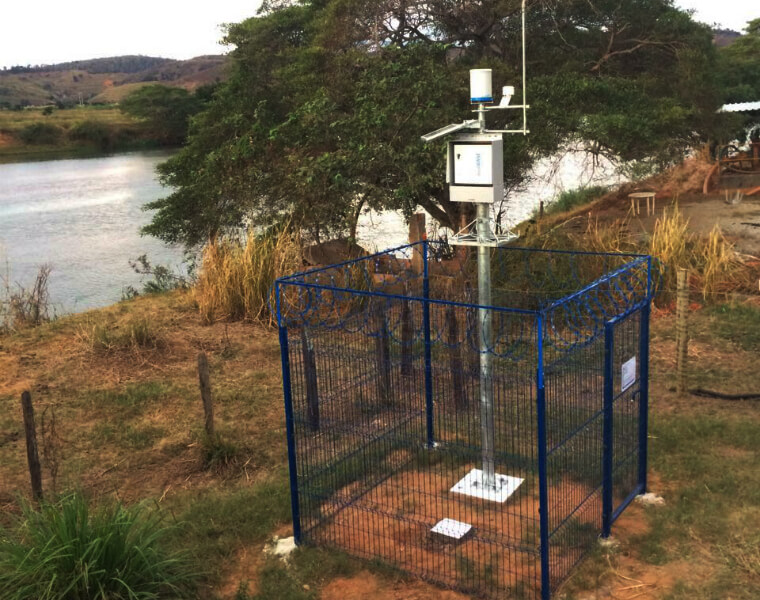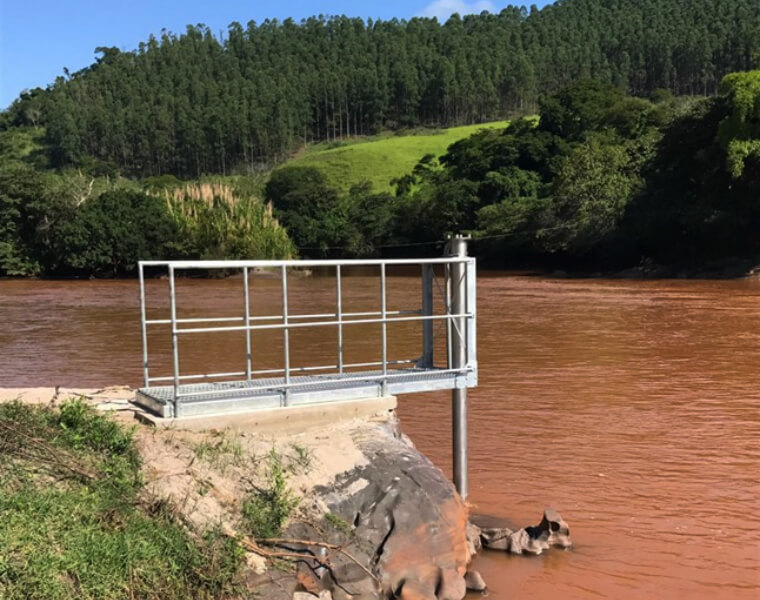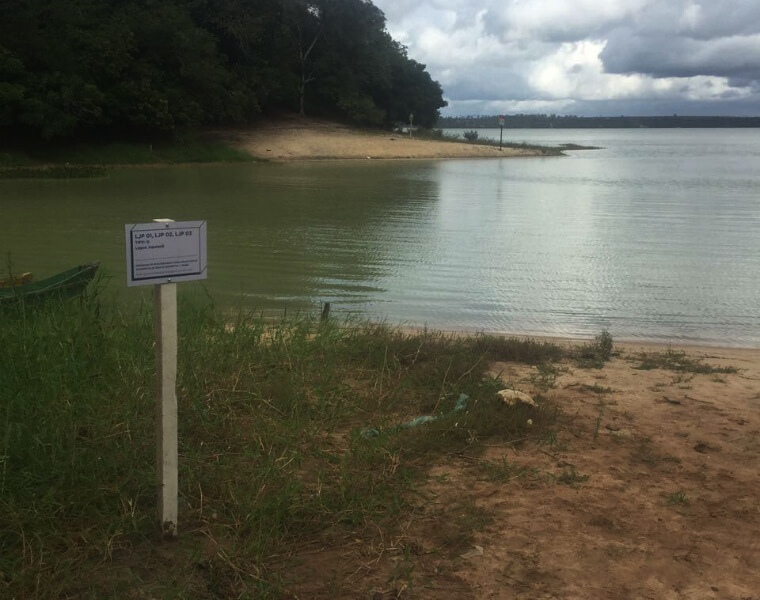The monitoring work covers the Doce River basin, estuarine and coastal zone and is expected to last 10 years
The water quality monitoring carried out by the Renova Foundation is undergoing a transition, from emergency stage, the result of notifications from the different regulatory agencies, to the implementation of the Quali-Quantitative Systematic Monitoring Program (PMQQS), established by the Transition and Conduct Adjustment Term (TTAC).
The program will be used as a reference for monitoring the recovery of the Doce River basin and adjacent coastal and estuarine zone over time. The Quali-Quantitative monitoring should be carried out by means of a systematic evaluation of water and sediment quality through a network of stations, which should be implemented and be operational by July 31, 2017.
The implementation of this monitoring network has the following objectives:
- To develop and implement a permanent quali-quantitative systematic monitoring program (PMQQS) for water and sediments, which also features the assessment of toxicological and ecotoxicological risks, integrating automated equipment, collection of water and sediment samples, biomonitoring and laboratory tests;
- To plan and implement a quali-quantitative monitoring plan for the waters of the Doce River and its tributaries to detect, monitor and record possible impacts of the interventions that are taking place;
The proposed monitoring network for the Doce River basin, estuarine and coastal zone is characterized as a trend network, that is, it is defined in representative points to monitor the evolution of the water and sediment quality, to identify trends and to provide diagnoses.
PERMANENT MONITORING
The PMQQS will last 10 years, period provided in the TTAC for the execution of the compensatory and environmental recovery actions of the Doce River basin. The objective is to ensure the monitoring of interventions and their consequences on water quality, as well as monitoring changes in the basin.
The minimum content of the PMQQS was developed within the framework of the Technical Board of Water Security and Quality (CT-SHQA), coordinated by the National Water Agency (ANA), with the participation of other environmental agencies, such as the Institute for the Environment and Renewable Natural Resources (IBAMA), the Chico Mendes Institute for Biodiversity Conservation (ICMBio), the State Water Management Institute of Minas Gerais (IGAM), the State Institute for Environment and Water Resources (IEMA) and the State Agency for Water Resources – AGERH). The PMQQS was prepared by the Renova Foundation based on the minimum content elaborated by CT-SHQA, whose approval by the Inter-Federative Committee (CIF) was given by Deliberation No. 53, dated March 31, 2017. The PMQQS in portuguese can be consulted in full through this link: https://goo.gl/Gfsx6U.
The PMQQS permanent monitoring will have manual sampling, in which water and sediment samples are collected and sent for laboratory analysis, and automatic sampling, which features monitoring on the spot in 22 stations. The automatic monitoring is done by a fixed structure at the measurement site, with equipment that measures water level and meteorological parameters, such as rainfall and air temperature.

Equipment of the Type I automatic station, installed in the Manhuaçu River in Aimorés, Minas Gerais. | Photo: Release
Eight of these stations will be equipped with a probe that hourly measures multiple parameters such as turbidity, acidity (pH), conductivity and water temperature, as well as the existence of microorganisms.

Equipment of the Type II automatic station, installed in the Doce River in Santa Cruz do Escalvado, Minas Gerais. | Photo: Release
In addition, the results will be transmitted online to form an information and alert network. This data may support the preventive planning of the main public water supply systems.
In manual sampling, PMQQS provides for monthly monitoring of water quality and sediments in river, lagoon, estuary and coastal zone points, sampling the main conventional parameters such as ions, nutrients, total and dissolved metals, as well as biological indicators (biomonitoring and ecotoxicological tests), including measurement of liquid discharge (flow) and solid discharge. A total of 91 points will be monitored along the Doce River basin (from the dams in Mariana (MG) to the mouth of the Doce River in Linhares (ES) and the coastal and estuarine zone (from the south coast of Espirito Santo to the south of Bahia). The monitoring locations in rivers and lagoons are signalized by signs with information on each point.

Sign installed at the Juparanã Lagoon in Linhares (ES), with information on the PMQQS monitoring point. | Photo: Release
The manual water and sediment samples are taken and analyzed by Laboratories contracted by the Renova Foundation. The laboratories are certified by the National Institute of Metrology, Standardization and Industrial Quality (INMETRO) and are generally recognized for the analysis of parameters of water quality and sediment according to the Standards for the Examination of Water and Wastewater (APHA) and the United States Environmental Protection Agency (USEPA).
NEXT STEPS
The automatic stations have been installed and manual sampling is expected to start as of August, with samples of water and sediment for the PMQQS. All results from these samples will be stored in a Renova Foundation database and shared in real time with the CT-SHQA’s environmental agencies. In addition, the Renova Foundation should prepare quarterly technical reports with the results of the monitoring, which should be forwarded to the CT-SHQA and the CIF.
The monitoring and analysis of the implementation of the PMQQS, including analysis of data and technical reports, will be carried out by the PMQQS Technical Monitoring Group (GTA-PMQQS), under the coordination of CT-SHQA and set by the CIF through Resolution No. 77 of June 27, 2017.
EMERGENCY MONITORING
Soon after the collapse of the Fundão Dam emergency monitoring was implemented in the affected rivers, which consists of analyses of water and sediment samples along the Doce River basin. Since then, this monitoring has been carried out to meet the specific demands of different regulatory agencies and included initiatives by Samarco itself and later by the Renova Foundation.
Renova’s emergency monitoring of the water and sediment quality covers 50 sampling points, from dams, the Gualaxo do Norte and Carmo River and along the Doce River basin, and currently features a bi-weekly sample frequency, with the exception of the lagoons monitored in Espirito Santo, whose frequency is monthly. Specifically, for the turbidity parameter, the monitoring was conducted until June 30, 2017, with a daily frequency at 39 sampling points along the Doce River basin and 29 in tributaries.
From the coastal zone to the mouth of the Doce River, water and sediments are monitored at 28 sampling points located between the river mouth at Linhares (ES) and the Environmental Protection Area Costa da Algas in Aracruz (ES). Other monitoring points, for example in Novo Bento Rodrigues, are also included in the monitoring program, which will be implemented at the end of July.
